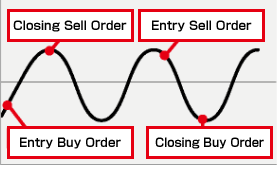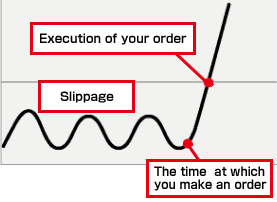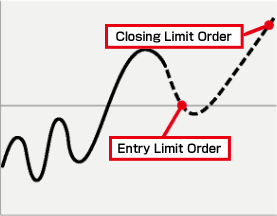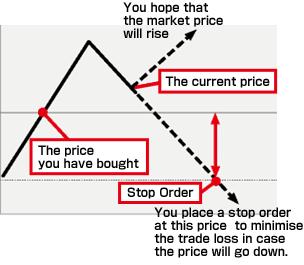Basic Orders
There are a variety of orders that can be used in Forex trading, and we would like to introduce 3 basic orders here.
Please click on the order icon below for more details.
| Order Type | What it is? | Advantages | Disadvantages |
|---|---|---|---|
| Market | An order to BUY or SELL at the prevailing market rate | An order will be executed immediately | The price at which a market order will be executed is not guaranteed. The last-traded price is not necessarily the price at which a market order will be executed. |
| Limit | An order to BUY or SELL at a more advantageous level than the current market price | A limit order guarantees a price. You will know in advance at what price your limit order will be executed. |
A limit order will never be executed unless the market order reaches a specified price. |
| Stop | An order to BUY or SELL at a worse level than the current market price | It is generally used to limit a loss. | When the stop price is reached, a stop order becomes a market order and the execution price may be significantly different from the order price |
Understanding different types of forex orders and how they are used is an essential basic skill
Market Order
A Market Order is an order to buy or sell at the current market price.
 |
Advantages When executing an market order, you do not have to specify the price and you can immediatelyenter the market. It is therefore very useful when you want to trade immediately. |
|---|---|
 |
Disadvantages The price of a trade may be different from that of an order you have made if the market price shifts when you make an order. This is more likely in a fast moving market and is known as Slippage. |
Limit Order
A Limit Order is an order to BUY or SELL at a more advantageous level than the current market price.
A limit order is generally referred to as a Take Profit Order.
For a Buy limit order, you create an order below the underlying market price.
For a Sell limit order, you create an order above the underlying market price.
Limit orders to open a position and take profit
 |
For example, you want to buy 1 lot of the EUR/USD and its current ask price is 1.3000. When you place a limit order, you specify the price lower than 1.3000. Let's say you have specified the price at 1.2950 and have made an opening limit buy order.
The market price has moved in your favor and has reached your order price of 1.2950. Your limit order is executed at 1.2950.
You now have a Buy position at 1.2950 and the current bid price is 1.2960. You then decide to create a Sell limit order to close this position and therefore create a sell limit order above the current bid price.
You create a sell limit order at 1.3050; if the market price then reaches this level and your order is executed at 1.3050 |
|---|
Stop Order
A Stop Order is an order to BUY or SELL at a worse level than the current price.
It is important to note that a stop order does not guarantee your order price. When the stop price is reached, a stop order becomes a market order.
Stop orders to minimise a loss
 |
For example, you buy 1 lot of EURUSD at 1.3000 You anticipate that the market price will go up above 1.3000 so that you will make a profit.
However, you are also aware that you will make a loss if the market price falls below 1.3000 (It may never come back to the level of 1.3000!!)
You then create a Sell stop order at 1.2950 to minimise your trading loss (this is how much you are prepared to lose). Imagine if the market price kept falling. Your loss would have been significantly more without a stop order. |
|---|

 My Hirose Login
My Hirose Login






